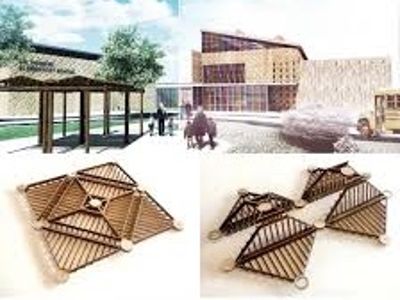Responsive architecture is an evolving field of architectural practice and research. It is a design field that has arisen in recent decades at the intersection of architecture and computer science, invokes a material response to digital information, and implies the capacity of the building to respond dynamically to changing stimuli. Responsive architectures are those that measure actual environmental conditions (via sensors) to enable buildings to adapt their form, shape, color, or character responsively (via actuators).
Sensitive designs strive to improve and broaden the discipline of architecture by enhancing the energy efficiency of buildings with responsive technology (sensors/control systems/actuators) while also creating buildings that embody the technical and cultural circumstances of our time.

Responsive architectures differentiate themselves from other types of interactive design by integrating intelligent and responsive technology into the key elements of the building fabric. For example, by integrating sensitive technology into the structural structures of building architects, they have the potential to connect the form of a building directly to its environment. This encourages architects to reinvent their way of planning and constructing space while at the same time seeking to advance practice rather than adding patchworks of intelligent technology to a current vision of “building”
Although substantial time and money has been spent on smart homes in recent years, the focus here has primarily been on designing computerized structures and electronics to fit the interior of the building or its rooms to the needs of occupants. Work in the field of responsive design has had much more to do with the building system itself, the capacity to respond to shifting environmental patterns, and to take sun, heat, and cold into account. This could potentially be accomplished by constructing structures composed of rods and strings that would flex in response to the wind, spreading the load in almost the same manner as a tree. Similarly, windows would respond to light, opening, and closing to provide the best lighting and heating conditions inside the building.
Information Source:
















